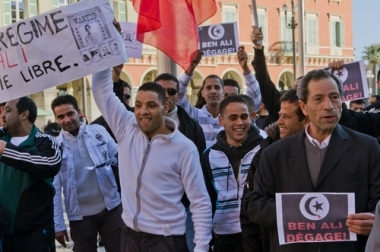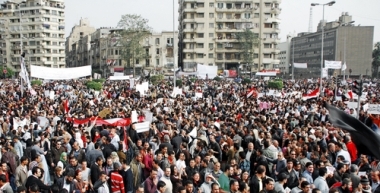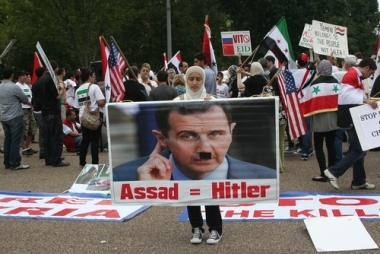THE Arab Spring it is not about an event, something brief or a season of the year, it is about a period of historical transformations in the direction of world politics. The Arab Spring is understood as the wave of protests and revolutions that took place in the Middle East and the north of the continent African in which the population took to the streets to overthrow dictators or demand better social conditions for life.
It all started in December 2010 in Tunisia, with the overthrow of the dictator Zine El Abidini Ben Ali. Then the wave of protests spread to other countries. In total, among countries that have gone through and are still going through their revolutions, Tunisia are added: Libya, Egypt, Algeria, Yemen, Morocco, Bahrain, Syria, Jordan and Oman. See below for the main information about each of these revolutions.
Tunisia: The protests in Tunisia, the first of the Arab Spring, were also called Jasmine Revolution. This revolt occurred due to the population's discontent with the dictatorial regime, it began at the end of 2010 and ended on January 14, 2011 with the fall of Ben Ali, after 24 years in the power.
The trigger that marked the beginning of this revolution was the episode involving the young Mohammed Bouazizi, who lived with his family by selling fruit and who had his products confiscated by the police for refusing to pay bribes. Extremely revolted by this situation, Bouazizi set fire to his own body, marking an event that shook the population across the country and fueled the realization of the popular revolt.

Tunisian protesters demonstrate for the end of the dictatorship in their country ¹
Libya: the uprising in Libya is known as the Libyan Civil War or Libya Revolution and it took place under the influence of uprisings in Tunisia, aiming to end the dictatorship of Muammar Gaddafi. Due to the repression of the dictatorial regime, this was one of the bloodiest revolutions of the Arab Spring. Another milestone in this episode was the intervention of the military forces of NATO (North Atlantic Treaty Organization), commanded mainly by the front of the European Union.
The Libyan dictator was killed after intense fighting with rebels on 20 October 2011.
Egypt: The Egyptian Revolution was also called days of fury, lotus revolution and Nile Revolution. It was marked by the struggle of the population against the long dictatorship of Hosni Mubarak. The protests started on January 25, 2011 and ended on February 11 of the same year. After the wave of protests, Mubarak announced that he would not run again in new elections and dissolved all power-structuring fronts. In June 2011, after the elections, Mohammed Morsi was elected Egyptian president, however, he was also deposed in the year 2013.

Protests called for the end of Hosni Mubarak's rule in Egypt ²
Algeria: The wave of protests in Algeria is still ongoing and aims to overthrow the current president Abdelaziz Bouteflika, for 12 years in power. Due to the increase in expressions of dissatisfaction with his mandate, Bouteflika organized the holding new elections in the country, but ended up winning in an election marked by the high number of abstentions. There are still protests and even terrorist attacks that demonstrate the dissatisfaction of Algerians with the government.
Syria: The protests in Syria are also ongoing and are already classified as a Civil War by the international community. The fight is for the deposition of the dictator Bashar al-Assad, whose family has been in power for 46 years. There are an estimated 20,000 dead since the dictatorial government decided to crack down on the rebels with violence.
There is some pressure from the UN and the international community to promote the overthrow of the dictatorship and end the civil war, however, the attempts to Intervention in the conflict has been frustrated by Russia, which has veto power in the UN Security Council and many interests in maintaining the power of Assad. There are signs that the Syrian government is using chemical and biological weapons to fight the revolution in the country.

Demonstration of Syrian citizens in Washington, United States. ³
Bahrain: The protests in Bahrain aim to overthrow the king Hamad bin Isa al-Khalifa, in power for eight years. Protests also started in 2011 under the direct influence of the effects of the Jasmine Revolution. The government responds with violence to the rebels, who have already tried to attack the Formula 1 Grand Prix. Records indicate hundreds of deaths during fighting with the police.
Morocco: The Arab Spring also took place in Morocco. However, with the difference that in this country there is no demand, at least for the time being, for the end of the power of King Mohammed VI, but for the reduction of his powers and attributions. The Moroccan king, through protests, came to meet parts of the demands, reducing part of his power and even appointing elections for Prime Minister. However, his powers remain broad and dissatisfaction in the country is still high.
Yemen: The protests and conflicts in Yemen revolved around the quest to end the 33-year dictatorship of Ali Abdullah Saleh. The end of the dictatorship was announced in November 2011, in a process scheduled to take place in a transitory and peaceful manner, through direct elections. Despite the announcement of a peaceful transition, there were conflicts and repression by the government. Some agreements made by the rebels with the al-Qaeda terrorist organization during some moments of the Yemeni revolution were also recorded.
Jordan: Jordan was one of the last countries, so far, to suffer the influences of the Arab Spring. Uprisings and protests have been taking place since the second half of 2012, with the aim of overthrowing the government of King Abdullah II, that, fearing the intensification of the Arab Spring in their country, announced in early 2013 the holding of new elections. However, the country's most popular party, the Muslim Brotherhood, decided to boycott this electoral process in the face of frequent denunciations and proven cases of fraud and vote-buying.
Oman: As in Morocco, in Oman there is no demand for the end of the monarchical regime of Sultan Qaboos bin Said that reigns over the country, but the struggle for better living conditions, political reform and increased salary. Due to fears of the spread of the Arab Spring, the sultan defined the holding of the first municipal elections in 2012.
The Sultan has been controlling the country's population's revolt situation through benevolence and favors to the population. Despite this, several protests and general strikes have already been registered since 2011.
______________
Image credits:
¹ jbor and Shutterstock
² Mohammed Elsayyed and Shutterstock
³ Atomazul and Shutterstock
By Rodolfo Alves Pena
Graduated in Geography
Source: Brazil School - https://brasilescola.uol.com.br/geografia/primavera-Arabe.htm

